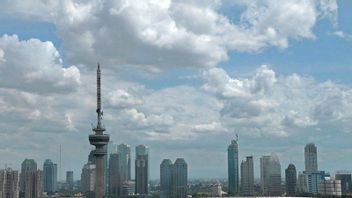
Iklim, as a condition for the average weather in a long period of time in an area, is influenced by various complex factors. The question is what can affect the climate?
This article will explore in-depth various factors that cause climate change, both from nature and human activities.
There are many different factors that affect the climate around the world. Various influences of these factors have caused various parts of the Earth to experience different climates.
Reporting from the Environmental Change Network, here are some of the most important natural factors:
The sea affects the climate of a place. coastal areas are cooler and wetter than inland areas. This is because clouds form when warm air from inland areas meet cold air from the sea.
The continent center is experiencing a large temperature range. In the summer, temperatures can be very hot and dry because moisture from the sea evaporates before reaching the center of land. In addition, ocean currents can increase or reduce temperatures.
Before continuing, also read the article on: What Is Carbon Emission? This Is The Terrible Impact on Human Life
Winds blowing from the sea often bring rain to the beach and dry weather to remote areas. For example, the wind that blows to the UK from warm inland areas such as Africa will be warm and dry.
Winds blowing to the UK from remote areas such as Europe will be cold and dry in winter.
In addition, the dominant wind (that is the most common) in the UK comes from the southwest via the Atlantic. These winds are cool in summer, light in winter, and tend to bring wet weather.
The climate can be influenced by mountains. The mountains receive more rain than low-lying areas because when the air is forced past high ground, the air cools, causing the humid air to condense and fall as rain.
The higher the place above sea level, the colder the place is. This happens because when the altitude increases, the air becomes thinner and less able to absorb and maintain heat.
The distance from the equator affects the climate of a place. At the poles, the solar energy reaches the Earth's surface at a lower angle and passes through a thicker atmosphere layer than at the equator.
This theory proves that the climate is cooler and further away from the Equatorialities. The pole also experienced the biggest difference between the long summer and winter days, among which
El airfall, which affects wind and rain patterns, has been linked to drought and flooding in countries around the Pacific. El lehat also refers to irregular water surface warming in the Pacific.
Warmer water pumps energy and moisture into the atmosphere, changing wind patterns and global rain. This phenomenon has caused tornadoes in Florida, smog in Indonesia, and forest fires in Brazil.
SEE ALSO:
The above factors affect the climate naturally. However, humans also affect the climate.
At the beginning of human history, human influence of climate will be very small. However, as the population grows and tree cut down in large numbers, the human influence of climate increases.
The Industrial Revolution, which began in the late 19th century, has had a major impact on the climate. The discovery of motorcycle engines and the increased burning of fossil fuels has increased the amount of carbon dioxide (glass gas - more about that later) in the atmosphere.
In addition, the number of trees cut down has also increased, reducing the amount of carbon dioxide absorbed by forests.
Apart from what can affect the climate, follow other interesting articles too. Want to know other interesting information? Don't miss it, keep an eye on the updated news from VOI and follow all the social media accounts!
The English, Chinese, Japanese, Arabic, and French versions are automatically generated by the AI. So there may still be inaccuracies in translating, please always see Indonesian as our main language. (system supported by DigitalSiber.id)
















